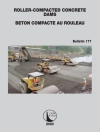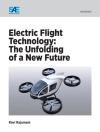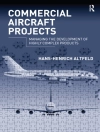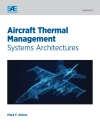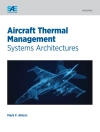This book brings together a group of international specialists to
explore the current state of the art and future potential for
encouraging, developing and implementing smart and sustainable
built environment strategies.
It covers a broad spectrum of issues, ranging from technological
advancement, through the assessment of past experiences, to
communication and education requirements and future strategies.
* provides a snapshot of current methods and technologies for
developing smart and sustainable built environment strategies
* over 30 fully refereed chapters from international experts
* addresses the particular requirements and problems of
difference areas and climatic regions
สารบัญ
Introduction – bridging the gaps in smart and sustainable builtenvironments (J. Yang, P.S. Brandon and A.C. Sidwell).
Part I: Creating Smart and Sustainable Cities.
1. Smart sustainable office design – effective technologicalsolutions, based on typology and case studies (A.A.J.F. van den Dobbelsteen, M.J. P Arets and A.C. van der Linden).
2. Sustainable building: perspectives for implementation in Latin America (V.G. Silva and M.G. Silva).
3. Demonstrating New Zealand’s future residential buildings(K.M. Bayne, C.D. Kane, R.J. Burton and G.B. Walford).
4. Smart and sustainable city – a case study from Hong Kong(S.S.Y. Lau, J. Wang, and R. Giridharan).
5. Evaluation of scenarios of a Southern-European intelligentcity of the future (P. Ombardi adn S. Curwell).
Part 2: Emerging Technologies and Tools.
6. Building as power plant – BAPP (V.H. Hartkopf, D.H. Archerand V. Loftness).
7. Development of a self-contained micro-infrastructureappliance (U. Staschik, H. Hinz, D. Hart, G. Morrison and C.Ives).
8. Concept for a DC-low voltage house (M. Friedeman, A. van Timmeren, E. Goelman and J. Schoonman).
9. Development of Phase change thermal storage wallcoverings inbuildings (K. IP, A. Miller, T. Corner and D.L. Dyball).
10. Investigating the energy efficiency of double-skin glassfacades for an office building in Istanbul (I. Cetiner and M.Aygun).
11. How to reduce energy-related greenhouse gas emissions inhomes and offices in New Zealand (R.M.E Hargreaves).
Part 3: Design, Construction and Operation Issues.
12. The potential for prefabrication in UK housing to improvesustainability (M.T. Gorgolewski).
13. Estimating the increasing cost of commercial buildings in Australia because of green house emissions trading (D.H. Clark, G.Treloar and R. Blair).
14. Raised floor systems for the sustainable fit-out of officebuildings (J. Yang and G. Zhang).
15. Sustainable deconstruction of buildings (F.Schultmann).
Part 4: Evaluating Past Experiences and Strategies.
16. Time and the sustainable developments agenda (P.S.Brandon).
17. Is ‘Smart’ always ‘sustainable’ in building design andconstruction (J.Bell).
18. Balanced value – a review and critique of sustainabilityassessment methods (T. Woolley).
19. Sustainability criteria for housing – a whole-of-lifeapproach (F. Martin and A. Pears).
20. Development of Building environmental assessment tool on a Website and its implementation (N. Yokoo, Y. Kawazu and T.Oka).
Part 5: Managing the Sustainability Knowledge.
21. Managing the time factor in sustainability-a model for theimpact of the building lifespan on environmental performance(A.A.J.F. van den Dobbelsteen, A.C. van der Linden).
22. Constructability knowledge management in sustainable design(M.H. Pulaski and M.J. Horman).
23. Sustainability, the built environment and the legal system(D.E. Fisher).
24. Simple and smart SCADA -a survey of user expectations (F.Basiri and T-G Malmstrom).
Part 6: Development Processes.
25. Sustainable building and construction: contributions byinternational organizations (W. Bakens).
26. Some UK experience of gauging progress on introducingsustainable business practices in the construction sector (J.Cooper, D. Crowhurst, S. Platt and R. Woodall).
27. Developing a sustainable development approach for buildingsand construction processes (J. Gibberd).
28. Adoption of Local Agenda 21: local councils’ vies onsustainability initiatives (S. Kham and B. Bajracharya).
29. Sustainability assessment considering asset and buildinglife cycles (D.G. Jones, K. Lyon Reid and D.G. Gilvert).
30. Energy efficiency uptake within the project house buildingindustry (M.D. Ambrose, S.N. Tucker, A.E. Delsante and D.R.Johnston).
Keywords Index.
เกี่ยวกับผู้แต่ง
The Editors
Dr Jay Yang is Senior Lecturer in Construction Management,
Queensland University of Technology.
Professor Peter Brandon, formerly Pro-Vice Chancellor at Salford
University, is an international figure in construction research,
and a Blackwell author.
Professor Anthony Sidwell is Head of the School of Construction
Management & Property, Queensland Institute of Technology.


